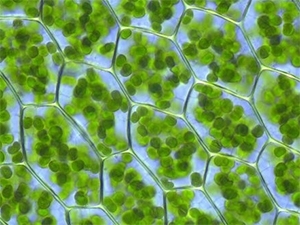Research project
In shape for photoregulation
How does the photoregulation mechanism work in detail?
- Contact
- Anjali Pandit
- Funding
-
 NWO Vidi 2012
NWO Vidi 2012

Oxygen-producing photosynthetic organisms can switch between transmitting sunlight and extinguishing sunlight in order to prevent photodamage. Using high-field magnet techniques the researchers will examine in detail how this mechanism works and what causes the switching process.
In oxygenic photosynthesis, sophisticated photoregulation mechanisms have evolved to enable the splitting of water via P680, the strongest oxidizer found in Nature, while preventing the system from photodamage in fluctuating environmental conditions.
Over the last decade, Photosynthesis research has become an integrated science with the aim to understand and control- this form of dynamic regulation on all levels, i.e. from individual pigment-protein complexes to whole cells or canopy, to optimize photosynthesis for solar-biofuel production. The photosynthetic membrane continuously adapts to changing light conditions via supramolecular re-arrangements, but very little is known about plasticity on a molecular level. Physical descriptions of photosynthetic proteins rely on static crystal structures that do not reveal their dynamics, conformational adaptation and protonation states.
This project proposes to explore the molecular plasticity of photosynthetic light-harvesting proteins. As a starting point, the researchers will investigate the major light-harvesting complex II (LHCII), the most abundant light-harvesting complex that binds 50% of land-bound chlorophyll. LHCII has a key role in photo-adaptation of plants and photosynthetic algae and forms a molecular switch between a light-harvesting and a photoprotective, light-quenching state. MAS-NMR spectroscopy will be integrated with protein and membrane biochemistry to reveal the conformational flexibility of LHCII, comparing its active and quenched states in vitro in detergent, inside liposomes and in lipid nanodiscs. In particular, the ground-state electronic structures and dynamics of the protein-bound chlorophylls will be resolved. An ambitious aim in the second stage is to perform in-cell NMR spectroscopy on photosynthetic algae. Finally, recombinant LHCII proteins will be investigated with isotope-enriched lutein; the carotenoids that are involved in the quenching process.
The proposed work will shine light on the structural dynamics and conformational adaptation of photosynthetic antenna proteins. As an outlook, this will open new routes for selecting targeted genetic approaches and testing of photophysical models for improved photosynthesis.
